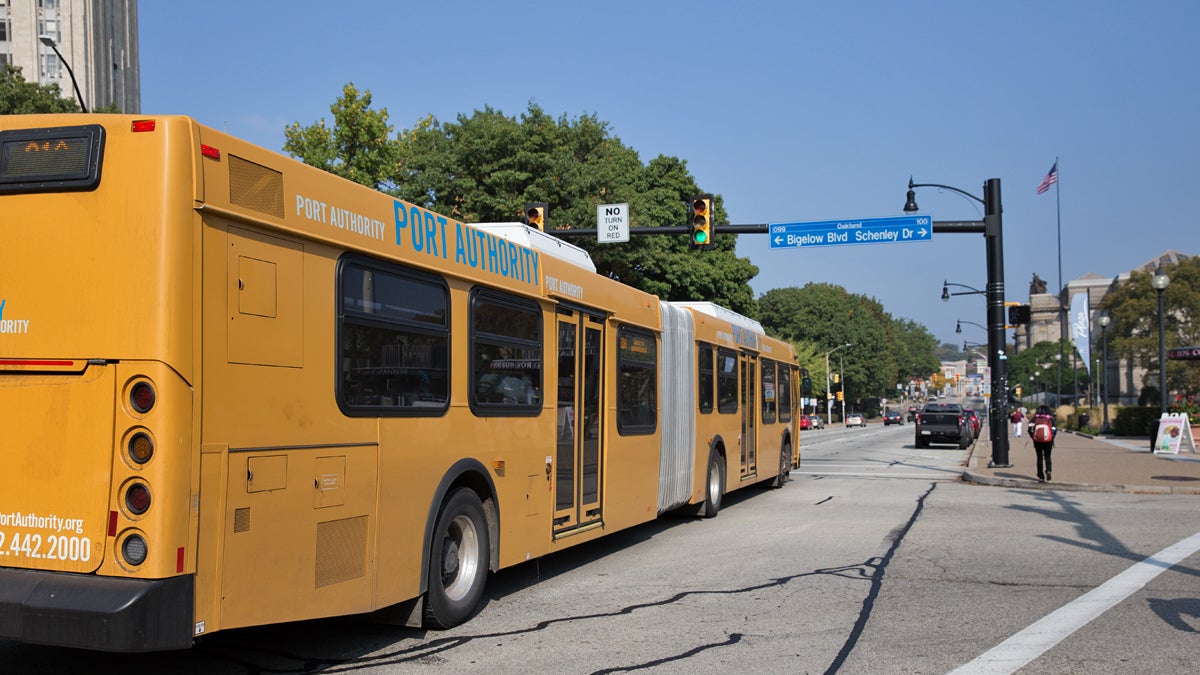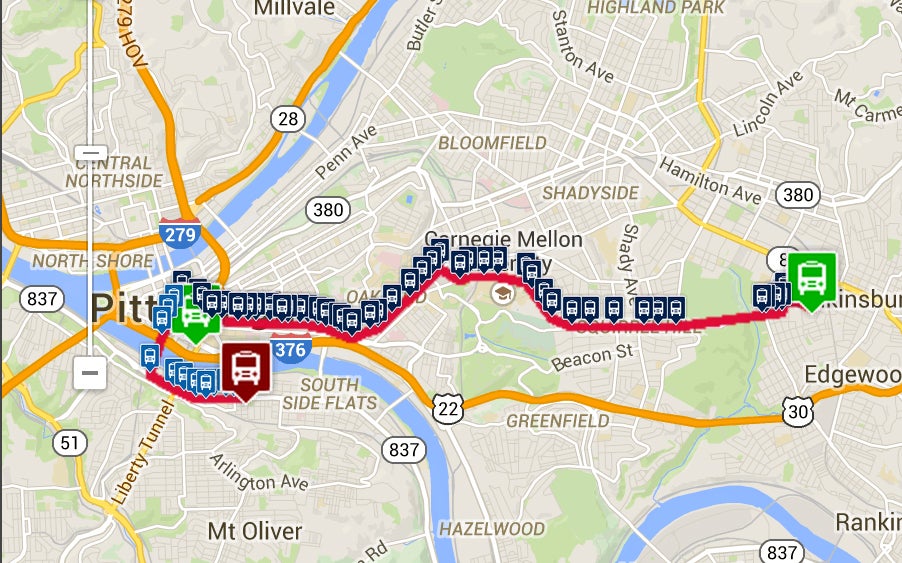How Pittsburgh gets around: walkability, bikeability, and public transit

A Port Authority of Allegheny County bus in Pittsburgh. (Lindsay Lazarski/WHYY)
One of the things cities are judged on is their get-around factor. So how’s Pittsburgh doing?
One of the things cities are judged by is their get-around factor. As in: how easy is it to get around? Is it a driving city, like Los Angeles or Houston, or is it a walking city like New York? There are things like walkability scores, bike friendliness, and, of course, public transit quality. What infrastructure and services the city (and state) invest in will determine what kind of urban experience it is but in a place like Pittsburgh, geography – there are many rivers and hills here – can also impose limitations on how people get around and what infrastructure options exist. So with that in mind, how’s Pittsburgh doing?
It scored pretty well on its walkability. Many of its neighborhoods are dense, with walkable business districts, but getting between neighborhoods in the city will take more than feet. How about a bike? Pittsburgh has about 65 miles of road with either designated bike lanes or shared car/bike markings (Philadelphia has over 230 miles of just bike lanes). It’s notable that 55 of those miles were established in the past seven years and Pittsburgh’s mayor, Bill Peduto, is intent on developing more bike-friendly infrastructure. So for now, there’s public transit, right?
Pittsburgh’s Port Authority operates bus routes, trains, and the inimitable inclines. The inclines – they connect the communities on top of the hills to the river below in a direct line, by a car on tracks running straight up the hill – are charming and offer stunning views, but moving at 6 mph with just about 20 passengers per trip, they’re probably not a commuter’s dream. The light rail network has four stops downtown and two stops on the Northside to access the stadiums, casino, and other businesses in the area. But the bulk of it snakes to the south of the city and to the suburbs there. There’s been talk of extending the light rail system, but so far plans have been elusive. For now, it does not connect to other transportation centers like the airport or Amtrak station in town, does not extend into the residential parts of the Northside, and does not go east of downtown at all, leaving the majority of the people in the city to depend on buses.
I recently mapped what my commute to work would be on the bus:

It would take 60 minutes and would cost me $3.50 one way to go 7 miles. I drive, instead, which takes me about 30 minutes, albeit often an infuriating 30 minutes, and less money in gas than the bus fare (car insurance and maintenance would add to the overall driving cost, but I’d own a car and pay much of that regardless). Like in many cities, driving in Pittsburgh is often more efficient than public transit options. In Pittsburgh that makes sense, because without a comprehensive subway system people are relying on buses, and aside from several busways – roads where only buses are allowed – buses drive on the same congested roads cars do, and make stops, in addition.
Efficiency aside, there are some areas in Allegheny County Port Authority doesn’t serve at all, including nearby suburbs. It has about half the number of routes it did in 2001 but its rates have doubled since then. Additional cuts were narrowly avoided in 2012. New funding from Act 89 gives the Port Authority some breathing room, but it’s not adding any new routes, yet. Instead, it plans to add additional buses to busy routes.
So how’s Pittsburgh’s public transit system doing? Ultimately, the answer depends on who you ask. For me, it’s not working. Maybe I’ll move, though, and catching a bus from a different neighborhood will be a different story. But not everyone can move and not everyone can access a car, which means some people walk long distances to catch buses that will take a while to deliver them to their destinations. I think that means the Port Authority has work to do.
And what about where you live? How do you get around, and is it working? Let us know in the comments section or tweet us @PaCrossroads.
WHYY is your source for fact-based, in-depth journalism and information. As a nonprofit organization, we rely on financial support from readers like you. Please give today.


